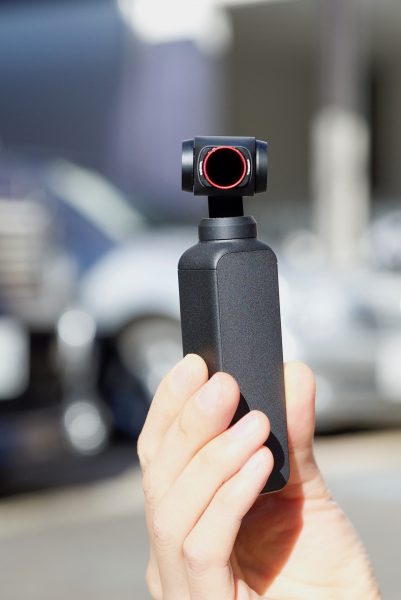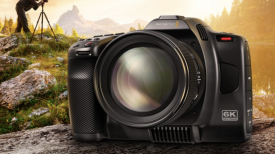
The Freewell ND/PL filters for the DJI OSMO Pocket are some of the first ND/PL filter solutions available for DJI’s latest creation. I reviewed the DJI OSMO Pocket late last year and unfortunately, at the time, there were no ND filter solutions available. For professional shooters to get the most out of the OSMO Pocket they really do need to use ND filters, otherwise, you have to run excessively high shutter speeds.
On low bitrate, inter-frame codecs running high shutter speeds can strain the codec. Less motion blur means more fine details per frame, therefore, harder decisions for the codec on what to keep and what to crunch. By sticking to the 180-degree shutter rule you will be helping the codec out.
The problem with the OSMO Pocket is you can’t adjust the f-stop, so even if you use ND filters you aren’t always going to be able to achieve correct exposure by following the 180-degree shutter rule.
What do you get?
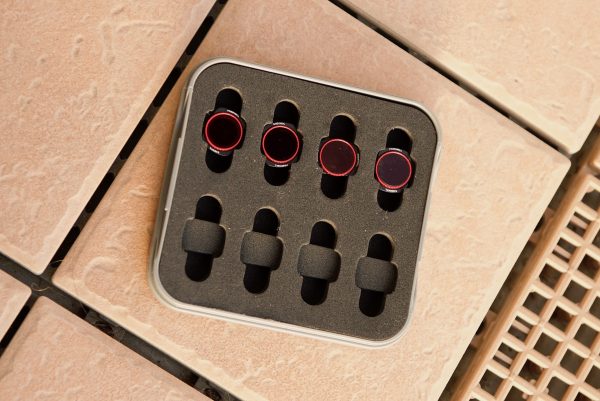
Included in the Freewell 4K Series Bright Day Filter 4 Pack for the DJI OSMO Pocket set are the following:
ND8/PL
ND16/PL
ND32/PL
ND64/PL
The filters come in a small protected case and you get a cleaning cloth. The filters give you between 3 to 6 stops of ND depending on which one you use. As the DJI OSMO Pocket performs better at lower ISO levels such as 100 and 200 you are probably going to find that you will primarily be using ND/PL 8 and ND/PL 16.
What are the filters made out of?
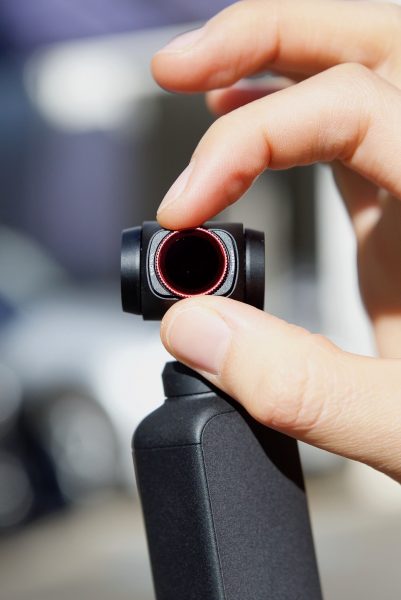
Freewell claims that the filters are made out of 16 layers of multicoated optical glass. The glass is manufactured in-house by Freewell. These are hybrid filters that combine both ND and PL properties. This is a good combination as the OSMO Pocket doesn’t have particularly good dynamic range, and it doesn’t deal well with bright reflective surfaces. You can rotate the red ring to change the polarizing effect.
The filter frame is quite thin and despite the filters being round, they have little tabs on the side so they are a little easier to handle. The filters come with a lifetime warranty.
Weight
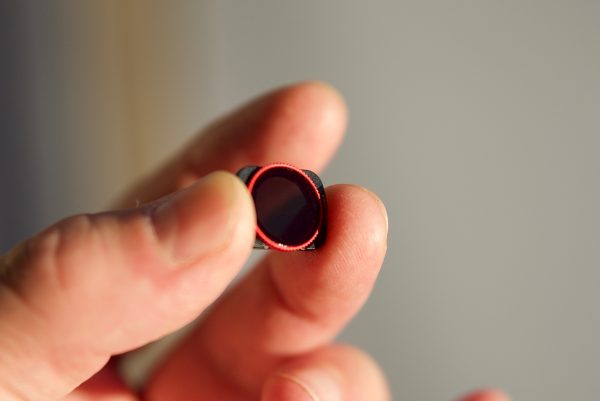
As the DJI Osmo Pocket utilizes a very small gimbal, you don’t want to add any excess weight to it. FREEWELL doesn’t quote any figures for how much their filters weigh. I put them on a kitchen scale and they barely moved the needle. I estimate that their weight is around 1 g (0.03 oz). This lack of weight means that using the filters shouldn’t affect the gimbals performance.
Build Quality
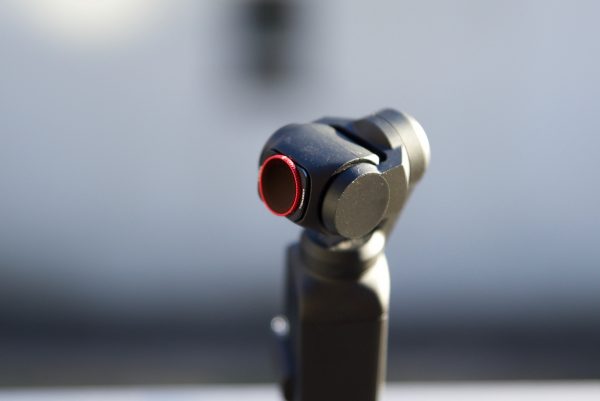
With the filters being tiny and weighing in at 1 g (0.03 oz) it’s quite hard to determine build quality. The filter frame feels nice and sturdy and the glass is well protected. My only gripe is that the writing on the filters is so tiny that you almost need a magnifying glass to see what ND strength you are using.
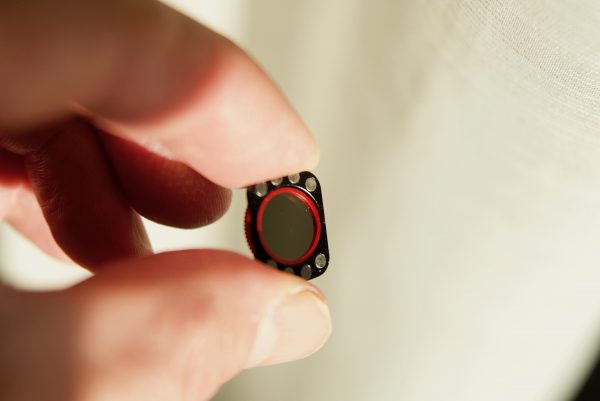
The filters also have a small red ring around them so they are easier to see. As they are so small, if they were black and you dropped one you probably wouldn’t be able to find it. I think what they should have done is color code the filters so a color represents the strength of the filter. Then all you would need to do is put labels in the box that showed the color and an ND strength. That way you would know exactly what filter you were using.
Do they attach firmly to the OSMO Pocket?
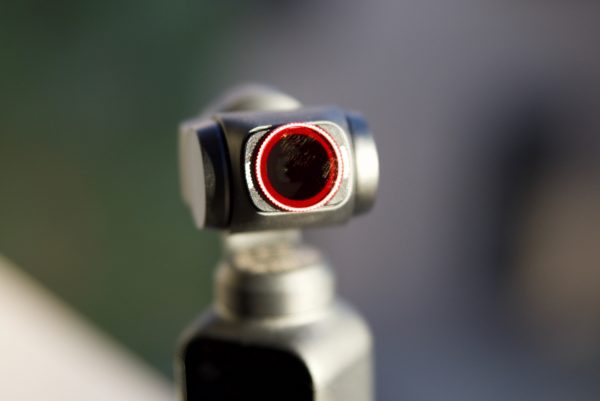
The filters magnetically attach to the front of the OSMO Pocket. Now, there is a little groove for where they attach, you just have to line the filter up and place it down. The filters do stay on fairly securely and even if you knock the filter it doesn’t move. The problem I found is that because the filters are so thin they are hard to hold onto and I constantly found myself touching the glass with my fingers. You can also turn the red ring to adjust the polarizing effect, but because the ring is so thin you need to be careful that you don’t end up putting your fingers on the glass.
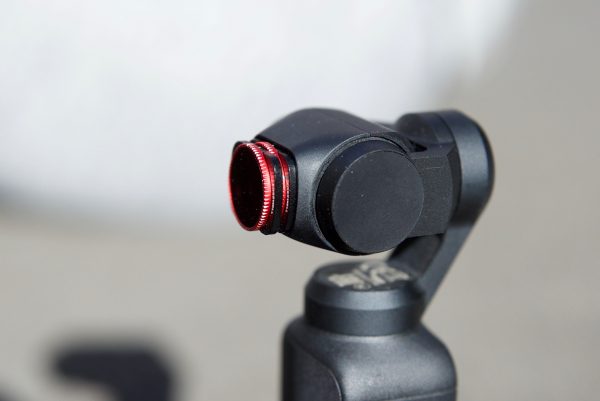
As they use magnets you can actually stack the filters to create stronger strengths of ND. While I wouldn’t actually recommend putting that much glass in front of the OSMO Pocket’s camera, you could do this for capturing long exposure timelapses or photos.
How do they perform?
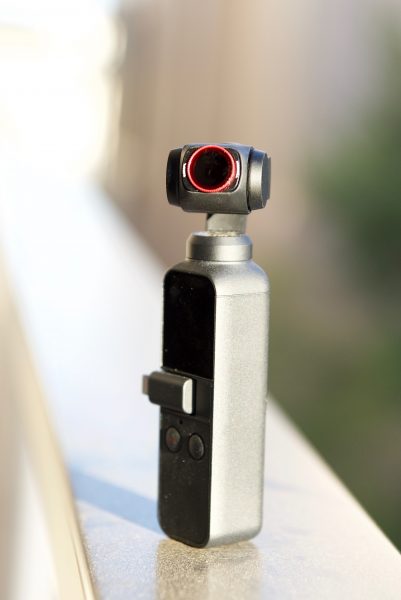
Having ND filters is one thing, but if they aren’t well made from quality glass then they can introduce fairly extreme color shifts, particularly when high strength ND is used. This is especially true when you combine both ND and PL properties into a single filter. The Freewell filters use a rotatable polarizing filter which can produce color shifts. I decided to do some tests to see how well the Freewell filters performed. To do this I shot a color chart, first with no ND/PL filters being used, and then with the various strengths of ND/PL. What I wanted to see is if there were any color shifts or loss of sharpness when using the filters. The Freewell ND/PL filters were set so that rotatable polarizing filter was at its minimum strength. This was done because I also wanted to see how they compared to ND/PL filters that weren’t rotatable.
The filters performed fairly well, even at high ND strengths, but they do have a slight push towards green. In saying that it’s fairly easy to correct the small green tint in post. The strengths seemed to also produce inconsistent results. In somewhat of a surprise the ND/PL 8 had the most noticeable green cast, while ND/PL 64 seemed to look the best out of all the filters.
When I compared the Freewell filters head-to-head against the PGYTECH OSMO Pocket PRO ND/PL filters I found that they weren’t as good. That’s not to say these filters are bad, but in my opinion, they aren’t as good as the PGYTECH filters which retail for the same price. Maybe this is because PGYTECH is using German SCHOTT optical glass, which can be found in more expensive ND filters that get used on digital cinema cameras, but it’s more likely to do with the fact that the Freewell filters rotate.
The filters do suffer from a slight loss of sharpness, but this is only really noticeable at higher ND strengths. If you use the ND/PL 8 and ND/PL 16, you probably won’t be able to perceive any real-world difference.
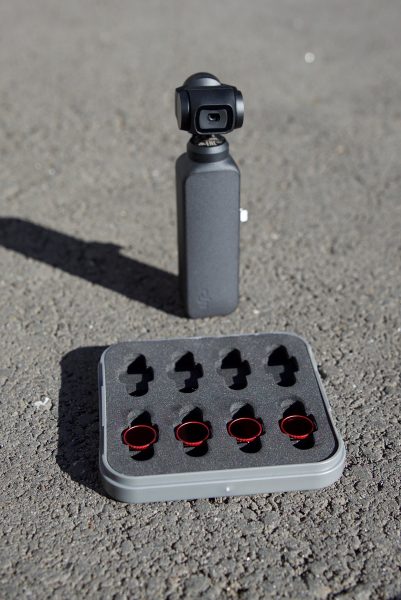
I also tested the filters in real-world conditions and they certainly make a difference to the results you can obtain when using the DJI OSMO Pocket. Not only do they allow you to keep the shutter speed down, but they also do a very good job of minimizing and creating more pleasant flare. The ND/PL filters also help the OSMO Pocket with bright reflections and glare, and it’s nice that Freewell has made the filter rotatable so you can adjust the polarizing effect. The only problem with having a rotatable PL filter on a small gimbal such as the OSMO Pocket is that you need to rotate it everytime you put it on the camera lens to place it in the correct position. You can only really do this with the gimbal turned on and this means that you will probably have to end up resetting the gimbal once you have finished making the adjustment. It’s very easy to forget that the filters need to be rotated to adjust the polarizing effect and if you are in a hurry you may well end up shooting with it in the wrong position.
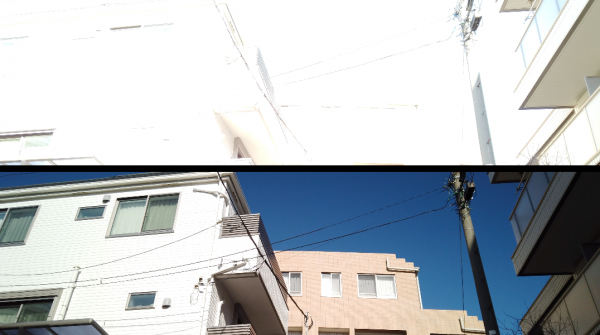
Above you can see the difference they make. At the top, the OSMO Pocket is set at 100 ISO 1/50th shutter and you can see that the picture is massively overexposed. At the bottom, the same settings are being used but this time I added the Freewell ND/PL 16.
I also found the filters were great for doing long exposure timelapses and taking long exposure photos.
I was surprised that a set of ND/PL filters that retail for under $70 USD was able to produce fairly decent results. I’ve tested expensive filters from well-known manufacturers before that weren’t very color accurate.
Not all filters are created equal, and this is why it’s important to do tests like this. It’s important to know exactly what you are getting.
Competition
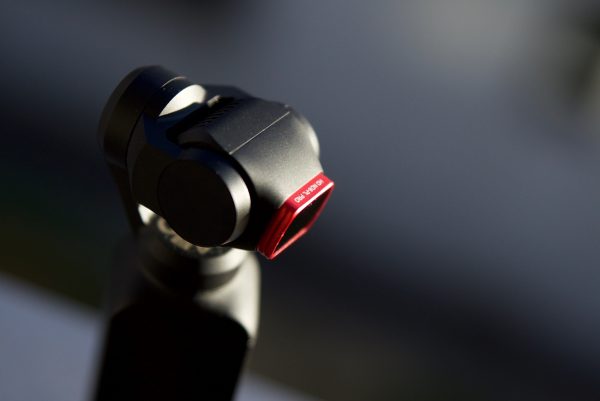
The Freewell filters are quite unique, because they do use a rotatable PL filter, but if you are looking for ND or ND/PL filters for your OSMO Pocket then competition comes from the PGYTECH OSMO Pocket PRO ND/PL filters, Honbobo DJI OSMO Pocket ND8+ND16+ND32+ND64 kit, and DJI’s own ND filters (which still aren’t available). It’s important to note that none of these other filters have a rotatable polarizing filter.
Price
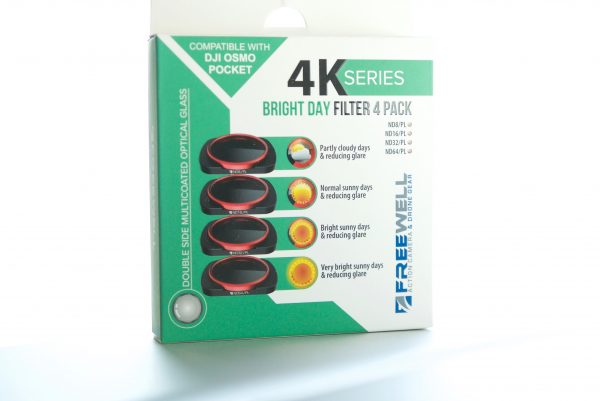
The Freewell 4K Series Bright Day Filter 4 Pack retails for $69 USD. Coincidentally this is the exact same price that the competing PGYTECH OSMO Pocket PRO ND/PL set costs. The Honbobo filters retail for ¥8,399 ($76.70 USD).
Conclusion
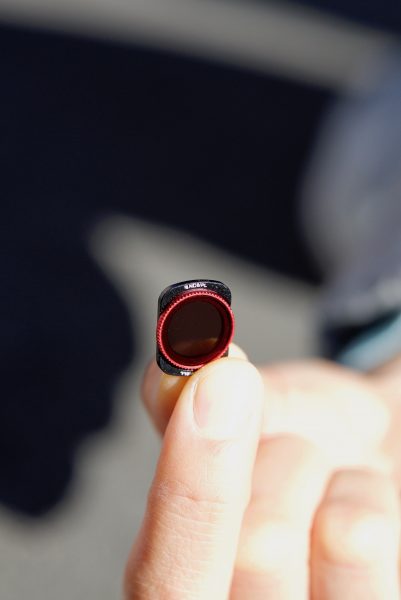
The Freewell 4K Series Bright Day Filter 4 Pack is a fairly good solution for the Osmo Pocket if you are looking for ND/PL filters and I like how you can adjust the amount of polarization. I still prefer the PGYTECH OSMO Pocket PRO ND/PL set as it’s got almost zero color shift, it’s a little easier to attach, you can read the ND strengths, and the magnetic carry case is a clever addition. In saying that, the Freewell filters do have the added benefit of featuring an adjustable polarizing filter. With the Freewell filters, it’s almost impossible to read what the ND strengths are unless you pull out a magnifying glass.

